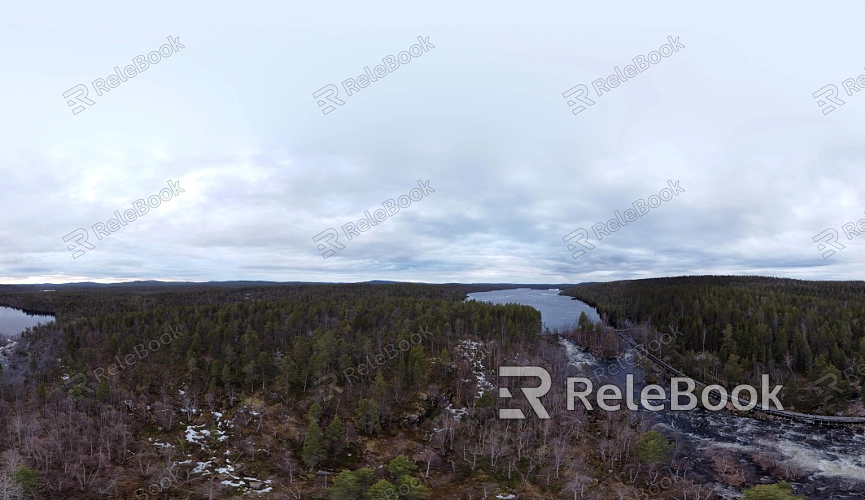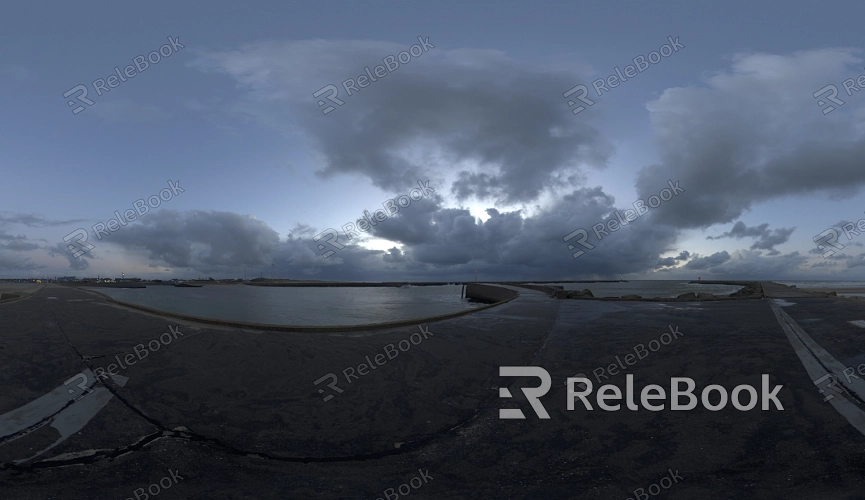What is the Difference Between Overcast and Sunny HDR Textures
Overcast and sunny HDR textures each possess unique characteristics that make them suitable for different types of projects. Whether in architectural visualization, game design, or film production, understanding the distinctions between these two types of lighting is crucial. This article will explore the main differences between overcast and sunny HDR textures, assisting designers in selecting the most appropriate lighting for their projects.

Lighting Characteristics
Overcast HDR textures provide soft and even light, ideal for creating a calm, moody atmosphere. This type of lighting typically minimizes harsh shadows, allowing scene details to stand out more prominently.
In contrast, sunny HDR textures present bright, high-contrast lighting that evokes energy and warmth. The shadows are deeper, and the light varies more significantly, making it well-suited for depicting sunny scenes.
Suitable Scenarios
In architectural visualization, overcast HDR textures are often used to showcase buildings under different weather conditions, highlighting material textures and forms.
Sunny HDR textures are commonly employed in outdoor scenes, particularly in locations like beaches and gardens where a bright, sunny effect enhances visual appeal.
Color Representation
Overcast HDR typically features cooler tones, leaning towards blue and gray, which creates a serene ambiance.
Sunny HDR, on the other hand, is characterized by warm hues, often including yellows, oranges, and reds, making the scene appear more vibrant.
Shadow Tone and Detail
When using overcast HDR, shadows tend to be softer and transition naturally, ensuring that details are not lost due to intense lighting. This effect is particularly beneficial for intricate scenes that showcase textures and materials.
Sunny HDR provides a rich variety of shadow tones, with more pronounced shadows that emphasize shapes and contours, ideal for designs that require a sense of dynamism.

Material Representation
Under overcast lighting, material reflections are typically smoother, allowing details of natural materials like wood and stone to become more pronounced.
Conversely, in sunny lighting, smooth surfaces reflect strong highlights, making it ideal for showcasing reflective materials like metal and glass.
Environmental Impact
Overcast HDR textures effectively simulate varying weather conditions, aiding in the representation of different environmental changes. This allows designers to quickly establish the scene's atmosphere without requiring excessive detail.
Sunny HDR is well-suited for demonstrating specific times of day, such as morning, noon, or dusk, enabling a rapid creation of diverse lighting effects.
Tools for Use
In popular 3D software like Blender, 3ds Max, and Maya, users can easily import and apply both HDR textures. Familiarity with these software's lighting settings helps designers flexibly utilize different lighting schemes in their work.
These applications also offer powerful post-processing capabilities, allowing designers to fine-tune lighting effects for optimal results.
Post-Processing Effects
In post-processing, overcast scenes typically require minimal color adjustments to maintain a natural look. Excessive modifications may lead to a loss of realism.
In contrast, sunny scenes often need more post-processing to enhance vibrancy and brightness, ensuring accurate representation of lighting effects.
Designer’s Choice
Choosing the right HDR texture often depends on project requirements and design goals. Understanding the differences between overcast and sunny HDR textures can help designers make more targeted decisions during the creative process.
By exploring these distinctions, readers should gain a clear understanding of the main differences between overcast and sunny HDR textures, along with their applicable scenarios and effects. This knowledge will aid designers in effectively selecting lighting sources to enhance rendering quality and visual impact.
If you are in search of high-quality HDR image resources, 3D textures, or models, Relebook offers a wide array of options to help you achieve outstanding visual results in your projects.

